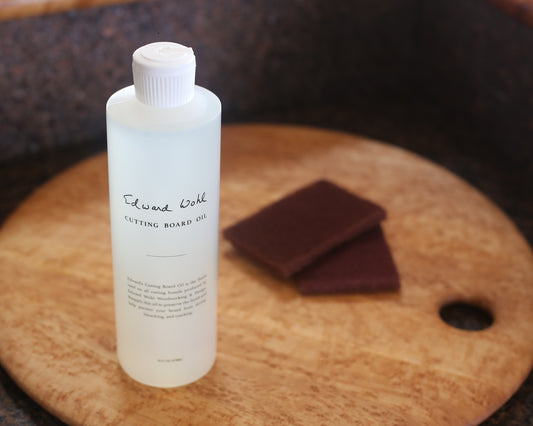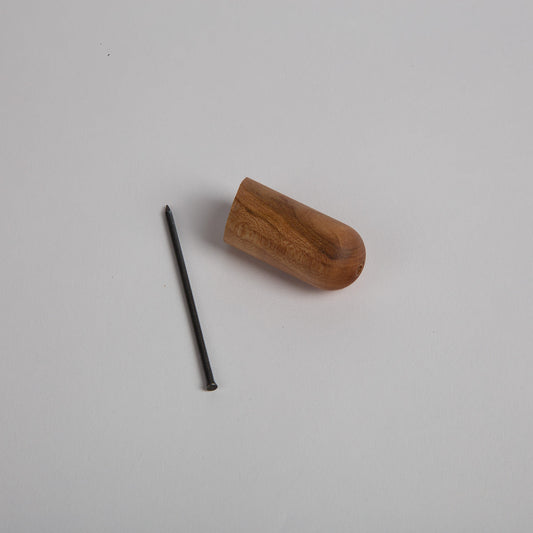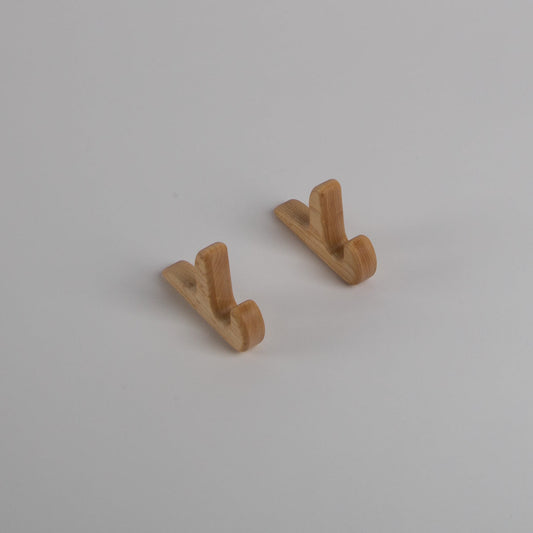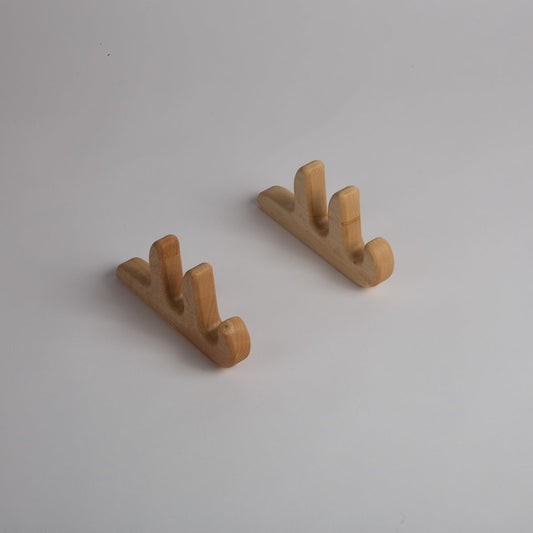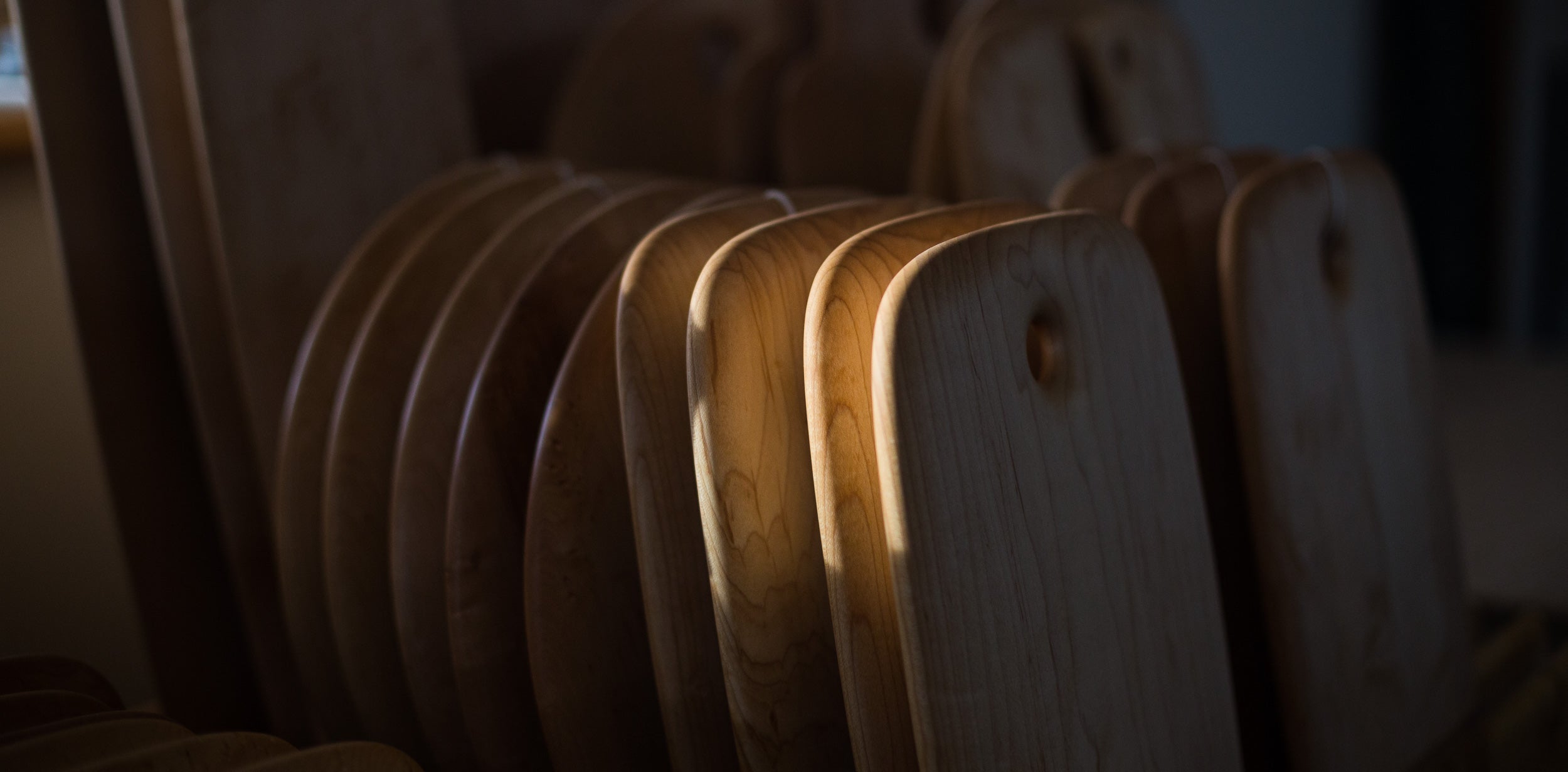
Cutting Board Care
To care for your board, hand wash with a mild detergent and warm water. Towel dry and initially store in a drying rack so that both sides can dry evenly. A Scotch Brite™ pad or fine sandpaper will smooth any roughness that develops.
Kiln dried wood is highly susceptible to water and dampness. Never allow one edge or side to be left on a wet surface. Occasionally turn your hanging board to expose both sides to air.
Do not store your board near a stove or other source of heat, as this may lead to cracking. Wiping periodically with mineral oil or Edward's Cutting Board Oil renews the finish and protects the wood. Let the oil soak in for several hours or overnight and wipe off the excess. To avoid staining, do not leave non-stainless metal objects on a wet board.
FAQ
How often should I oil my cutting board?
There's no hard and fast rule, as it depends on how often you're using and washing your board. In general, if your board looks dried out, it's time to oil it. A board used daily should be oiled about once every couple of weeks. Keeping your board well-oiled will preserve it's appearance and help prevent damage.
How can I remove a stain from my board?
It's not uncommon for foods to leave stains on a cutting board. Most stains will fade with time, especially after repeated use and washing, but for persistent stains one suggestion is to scrub the area with a paste of baking soda and water using a scotch-brite pad or other mild abrasive.
After washing my board feels rough. How can I get back its silky smoothness?
This is expected; when wood gets wet, the grain 'raises' causing it to feel rougher to the touch. Using a mild abrasive, such as a scotch-brite pad (included with our oil), to rub your board will restore much of it's smooth feel. Keeping your board well-oiled will also help to prevent water from penetrating the wood fibers.
Is it possible to fix a warped board?
If a board has warped, it's almost always because the two faces were exposed to different amounts of moisture. It can happen due to a board being left on a wet surface, or laying flat in an area with high humidity. One common mistake is washing a board then laying it flat on the countertop to dry; the side facing up air dries, but the bottom face remains wet against the counter. Moisture makes wood expand, and when one side expands more than the other the board warps.
The good news is that a warped board can often be fixed!
Here's a step-by-step process:
- Dampen the concave side of the board with a washcloth or sponge.
- Place the board wet side down on a non-porous surface, e.g. a stone or composite countertop. Alternatively you can place a large plastic bag under the board. The idea is to keep the surface wet rather than letting it dry out quickly.
- Check the board every 20 minutes or so. Because the wet side of the board will expand, it will warp the board in the opposite direction, effectively straightening the board. Note that it is very possible to over-do it, and warp the board the other direction, which is why you need to check it periodically.
My board is damaged! What can I do?
With proper care, our boards should provide many years of service. However, like any natural wood product, they are susceptible to damage from water, heat, or misuse. Even with proper care, boards sometimes develop cracks due to the unpredictable movement of the wood.
Our policy is to repair or replace any defective board free of charge within one year of purchase date.
Any board can be returned to us for repair or refurbishing for a small fee. Contact us for more information or questions regarding board repair.
-
Edward's Cutting Board Oil - 16oz
Regular price $25.00 USDRegular priceUnit price / per -
Hanging Peg
Regular price $10.00 USDRegular priceUnit price / per -
1-Board Breadboard Stand
Regular price $27.00 USDRegular priceUnit price / per -
2-Board Breadboard Stand
Regular price $35.00 USDRegular priceUnit price / per

